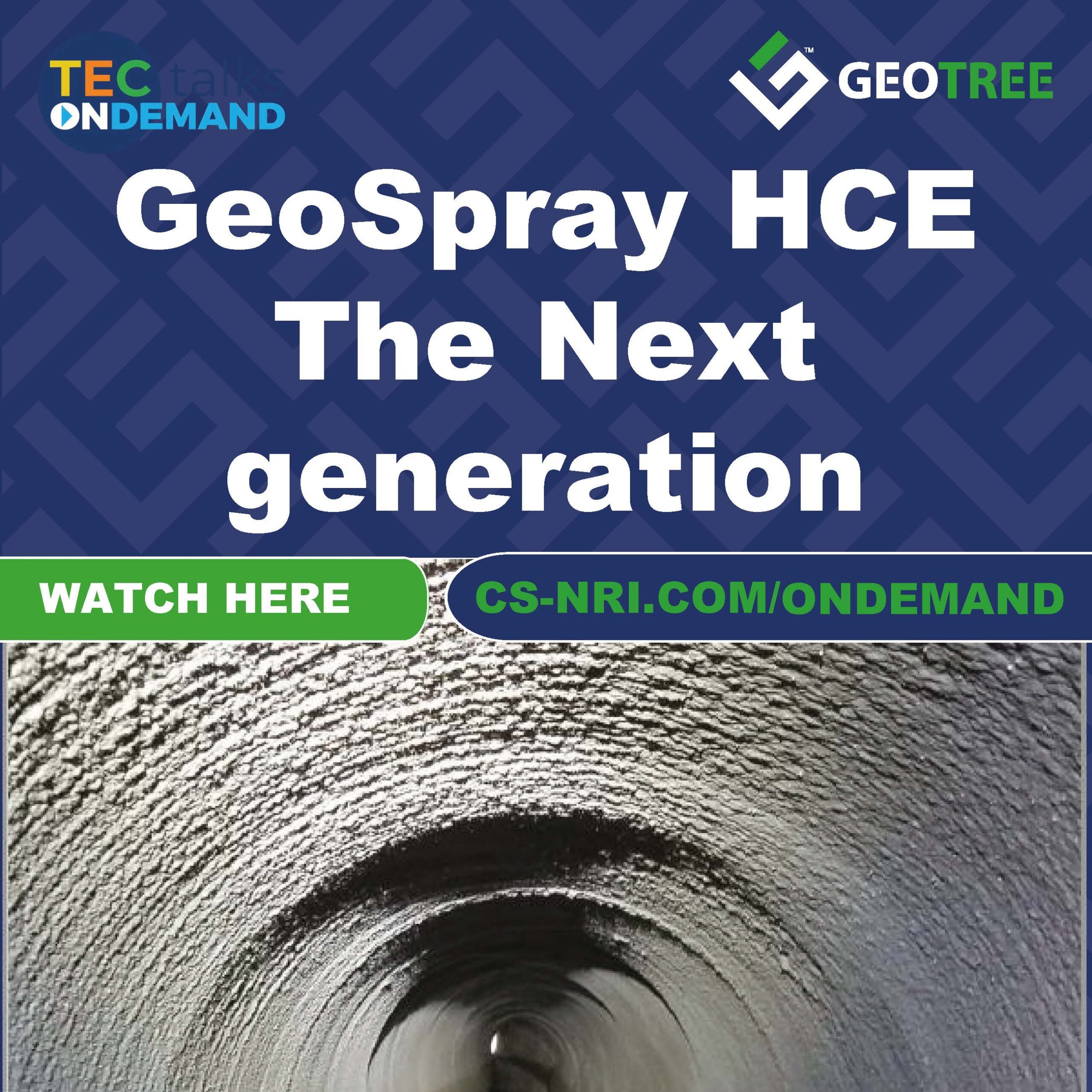GeoSpray® HCE geopolymer system is the next generation of high-performance, fiber-reinforced geopolymer mortars, specifically formulated for used in highly corrosive environments (HCE).
It is engineered to be an environmentally friendly solution for rehabilitating pipes, culverts, and containment areas. This spray-applied liner creates a new structural pipe within the old pipe.
The HCE system replaces and offers improved performance over the GeoSpray AMS system - Superior corrosive resistance as verified via 3rd-party testing to DIN 19573 (XWW4).
GeoSpray Features in Highly Corrosive Environments (HCE)
- Water-activated
- Can be pumped a distance of 500 linear ft (152.4 m)
- Styrene-free with no leachable toxins
- Ultra-low, porosity-reducing chemical and water penetration
- Provides physical properties associated with cement mortars, but with the chemistry similar to that of an engineered stone
Engineered
- Highest flexural strength repair mortar – 1500 psi at 28 days (ASTM C78)
- High early and ultimate strength
- Unique chemistry promotes self-bonding – Eliminating cold joints between applications
- Inherently resistant to H2S corrosion mechanisms
- Adapts to any shape including: bends, curves and angles
- Most extensive third-party testing in the industry
Typical Uses
- Very Corrosive applications
- Sewers
- Industrial water
- Manholes
- Wet wells
- Wastewater
- Lift station tanks
- Containment areas
- pH < 2.0
- High H2S environments
More about Geopolymers
Dating back to the earliest historical uses of cementitious formulations as building materials, society has looked for ways to use the wide variety of available raw materials to improve the physical properties of the final products.
Evidence of the inclusion of volcanic materials such as volcanic ashes by the ancient Greeks dates back to at least 500–400 BC. As early as the 1920s, cement formulators have employed refined industrial byproducts such as fly ash, metal slag and processed silicas, collectively referred to as pozzolans, as fillers and aggregates in standard cements. Today, almost all cement formulations contain some percentage of these natural or manmade by-products.
It has long been know that these pozzolans undergo chemical reactions with standard cement materials that improve properties, such as compressive strength, and bind materials like calcium hydroxide, Ca(OH)2, enhancing the resistance to chemical corrosion.
In the early 1970s a French scientist, Joseph Davidovits, discovered that under the right set of conditions these components could fully react with one another to form an extended polymeric network primarily made of Aluminosilicate bonds (Al-O-Si). He coined the term geopolymer to refer to this new class of materials.
Since that time, engineers and scientist around the world have worked to develop commercially viable geopolymer solutions for a wide variety of industrial applications. GeoTree Solutions has developed a state-of-theart geopolymer mortar – GeoSpray® - that exploits the physical and chemical advantages of geopolymeric materials in a form that is easy to use and employ in the field.
Learn more about Geopolymers.



